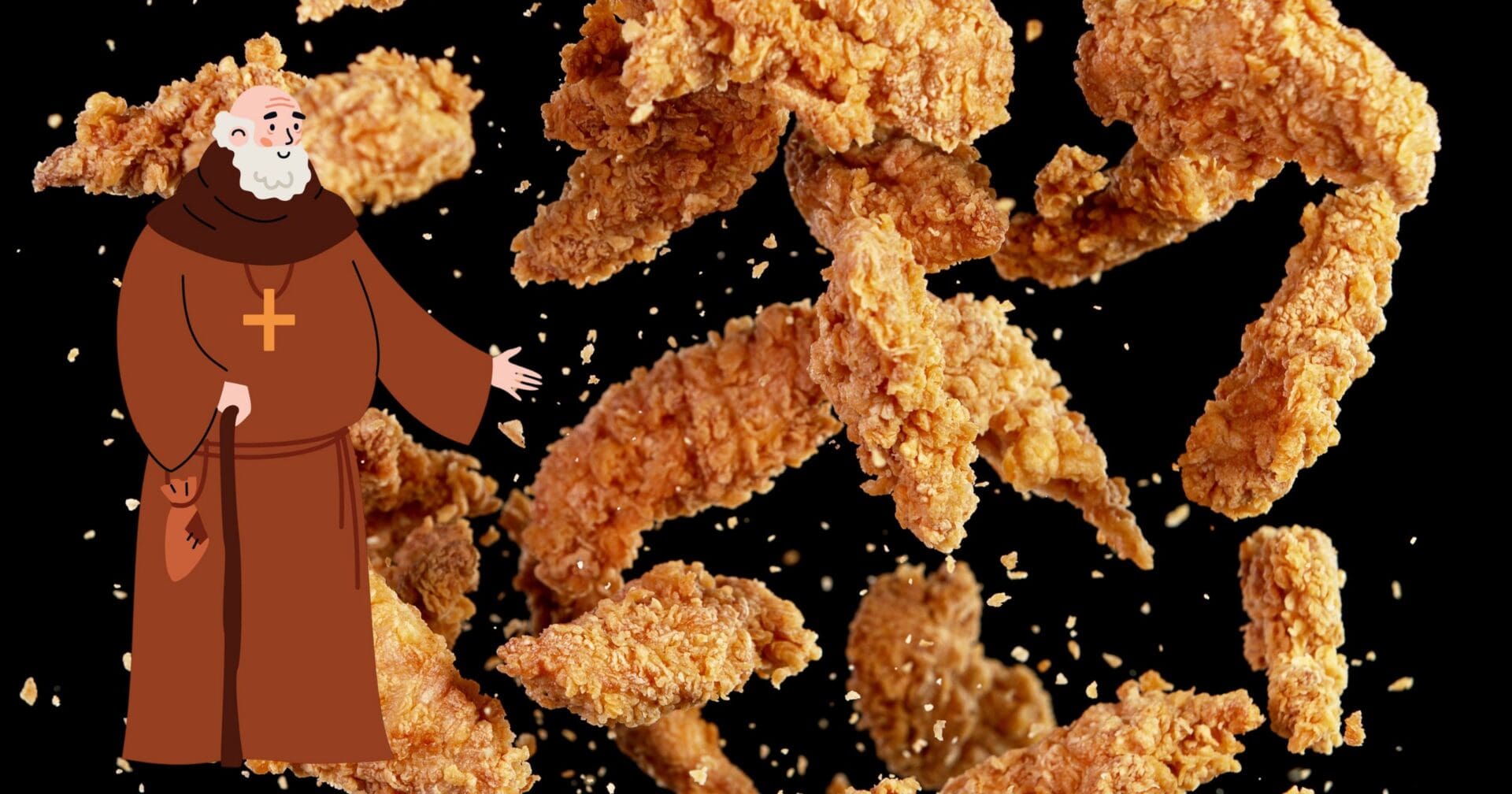For the past six thousand years, humans and chicken have shared an intricate common existence. Today’s chickens provide us with plentiful meat and eggs and are the most common form of poultry consumed across the world.
Our current cultivated chickens descended from an ancestral species of Asian jungle fowl, bred to be very passive with little fear of humans and an ability to lay many eggs quickly. However, chickens were not always the easy-going birds they are today. If you can’t get enough of chicken or eggs, you should probably thank medieval Catholic monks.
Archaeologists have long noted an increase in the fossil record of chicken bones from the 9th century AD onward. A team of researchers from Oxford University set out to find the cause of this increase in the archaeological record. They first wanted to identify the difference between today’s modern chicken and the birds of yesteryear. In doing so, they identified the thyroid-stimulating hormone receptor gene, or TSHR gene for short, that is one of the primary causes of reduced aggression and increased egg-laying ability.
While nearly 100% of chicken’s today carry this gene, 1100 years ago less than half carried it. To figure out what caused this sudden dramatic shift, they looked at the years with an increase in chicken bones to identify what pressures selected for chickens with the TSHR gene.
In their study, they directly linked Catholic fasting practices of Benedictine Monks to the domestication of chickens, because during a fast meat from four-legged animals was not allowed while chicken was exempted from this rule. One author of the study, Anders Eriksson says:
“This significant intensification of chicken and egg production has been linked to Christian fasting practices, originating with the Benedictine Monastic Order, which disallowed the consumption of meat from four-legged animals during fasting periods, but the restrictions did not extend to birds or eggs. These dietary rules were adopted across Europe and applied to all segments of society around 1000 AD.”
Because Benedictine monks were allowed to consume chicken during their fasts, selective pressures on chickens who were easy to breed and not aggressive to humans rapidly caused them to shift towards carrying the TSHR gene. As the TSHR gene become predominant, the modern chicken of today appeared and the billions of people around the globe have monks to thank for it.
Photo credit: Jag_cz / Rumka vodki / Shutterstock.com















With Ora et Labora as their mantra, medieval monks have served Society with dedication and distinction.
The selective breeding practiced by medieval monks was truly a great contribution to society. I would also add one of my favorite contributions is the breeding ( also by Benedictines) of the Holsteiner breed of warmblood horse. Goes back to the 12th century.
God Bless those monks! Not only did they refine that great beverage beer, they gave us that meal that goes great with a cold one, hot wings.
The illustration of the religious gentleman standing by a plate of crispy fried chicken does not depict a monk.
He appears to be wearing a Franciscan habit, which would mean that, instead of being a monk, he is is in fact a friar (as in “OFM” = Order of Friars Minor) Frequently, Franciscan, Dominicans, Augustinians and some others are incorrectly referred to as monks, but they are all friars. There is a very real difference in the two kinds of religious life. Also, Friars should not be confused with friers, which, typically, are chickens and are not usually even Catholics.
It’s the Capitalization that accomplishes that fact
I’m still laughing over Stephen’s closing comment about “friers”.:)
When were birds added to the fasting requirements?
I think this story is fascinating in that so many believe the Church is against science which came from the Calvinists believers post reformation.
Always remind those who claim “the Church is against science” that the Church invented modern materialist empirical science. For example, the earliest written record of the scientific method was put down by Robert Grosseteste, a Catholic Christian priest. You can follow up with a bit of a joke, tell ’em that the Church imposed its gravest punishment upon him for that. After his involvement with science, the Church made him a bishop!
[…] Abp. Chaput: Fr. Jm. Martin Deserves Respectful Criticism, Not Trash-talking – CNA via CWR Enjoy Chicken? Thank Medieval Catholic Monks – uCatholic Why Do We Sometimes Use the Greek Words Kyrie Eleison During Mass? – P. […]
Was Colonel Sanders a Bishop or a Cardinal? I can’t remember.
He was a friar
I posted this to my Facebook Friends. I’m now going to wait to see how many ‘likes’ I get and to see if any of my friends know about monks’ invention of beer, and the Holsteiner breed of warm blood horses. The last one goes back to the 12th century, as posted by another replier.
Since when do you eat ANYTHING during a fast? Abstenance requires that you abstain from meat, not fasting.
[…] historia sobre el impacto católico en nuestra dieta es la que acaban de sacar a la luz un equipo de arqueólogos de Oxford. Resulta que han encontrado en los restos fósiles a partir del siglo IX d.C. un notorio aumento de […]
I still.prefer Irish whiskey to Scotch
[…] нам кури, пише Біллі Райан на блозі в UCatholic, походять від дуже давніх видів азіатських джунглевих […]
Please link or provide a reference for the study quoted – or show me where you already did.